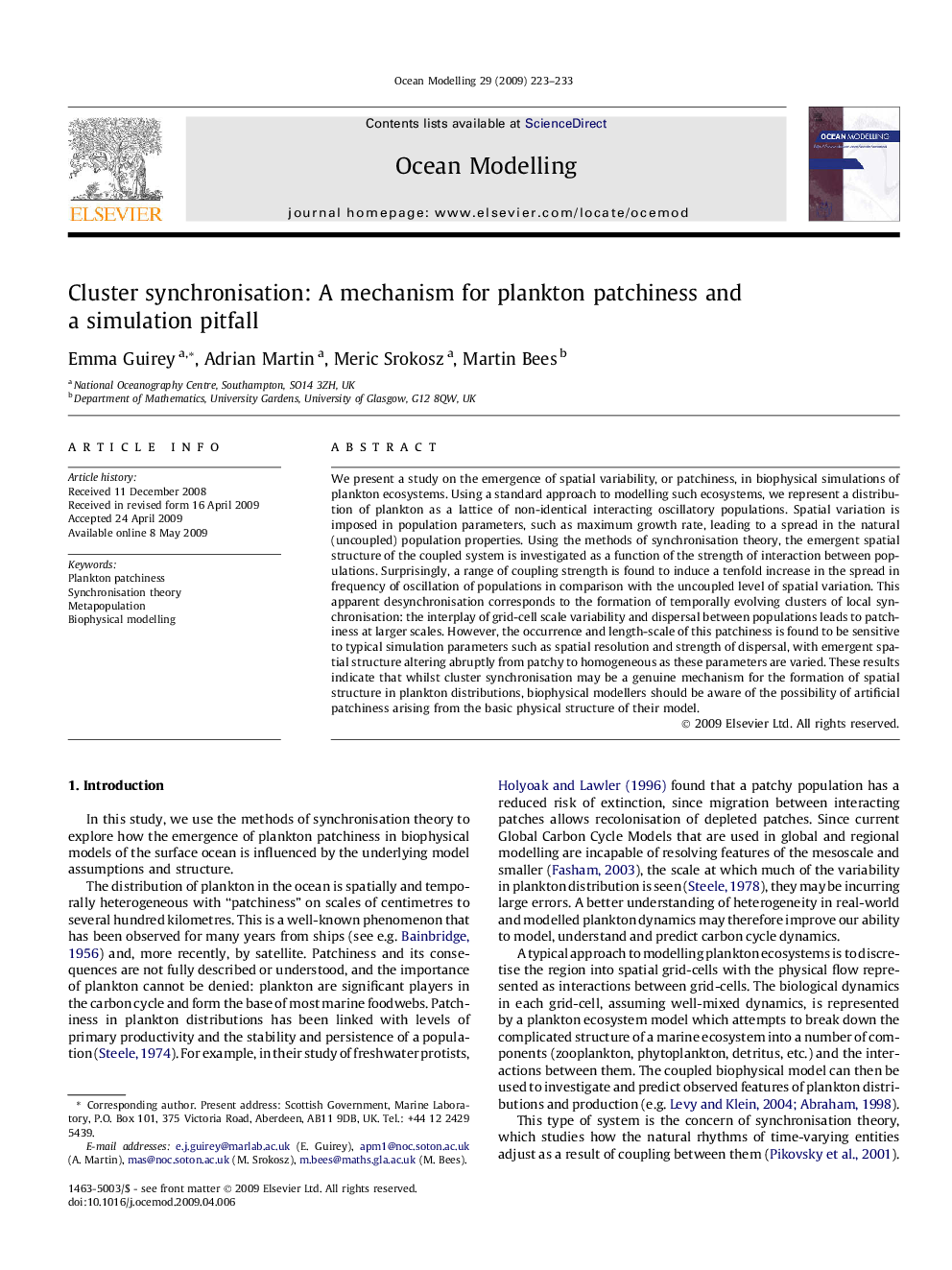| کد مقاله | کد نشریه | سال انتشار | مقاله انگلیسی | نسخه تمام متن |
|---|---|---|---|---|
| 4552535 | 1328731 | 2009 | 11 صفحه PDF | دانلود رایگان |

We present a study on the emergence of spatial variability, or patchiness, in biophysical simulations of plankton ecosystems. Using a standard approach to modelling such ecosystems, we represent a distribution of plankton as a lattice of non-identical interacting oscillatory populations. Spatial variation is imposed in population parameters, such as maximum growth rate, leading to a spread in the natural (uncoupled) population properties. Using the methods of synchronisation theory, the emergent spatial structure of the coupled system is investigated as a function of the strength of interaction between populations. Surprisingly, a range of coupling strength is found to induce a tenfold increase in the spread in frequency of oscillation of populations in comparison with the uncoupled level of spatial variation. This apparent desynchronisation corresponds to the formation of temporally evolving clusters of local synchronisation: the interplay of grid-cell scale variability and dispersal between populations leads to patchiness at larger scales. However, the occurrence and length-scale of this patchiness is found to be sensitive to typical simulation parameters such as spatial resolution and strength of dispersal, with emergent spatial structure altering abruptly from patchy to homogeneous as these parameters are varied. These results indicate that whilst cluster synchronisation may be a genuine mechanism for the formation of spatial structure in plankton distributions, biophysical modellers should be aware of the possibility of artificial patchiness arising from the basic physical structure of their model.
Journal: Ocean Modelling - Volume 29, Issue 4, 2009, Pages 223–233